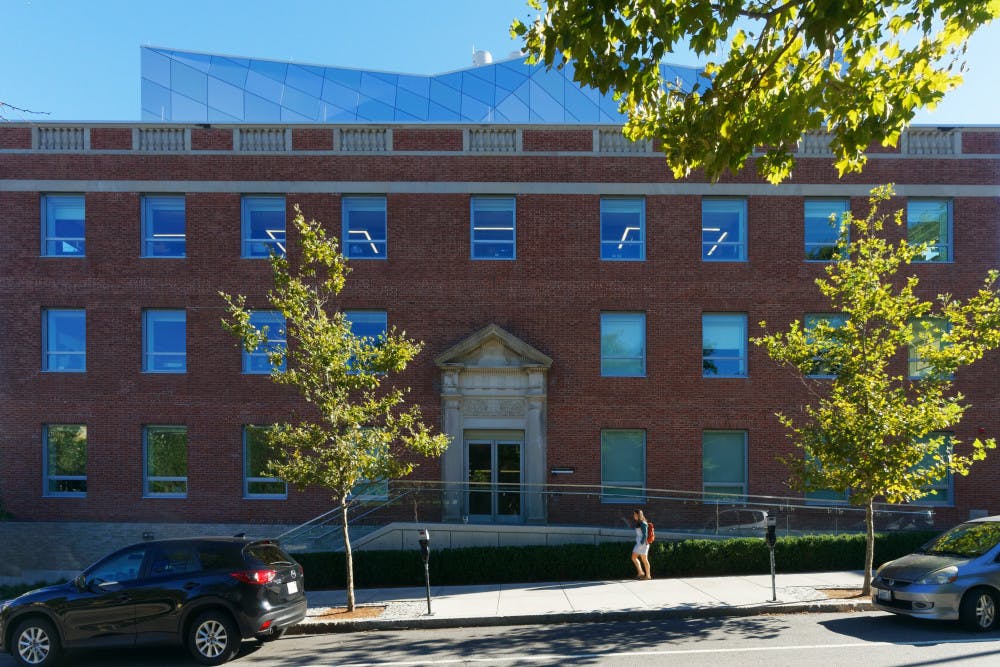The environmental studies and science concentration is creating a new track devoted to studying the injustices and inequalities embedded within environmental issues, to be approved this spring, according to multiple sources.
Last semester, the Institute at Brown for Environment and Society convened a committee composed of undergraduates and faculty members to create a departmental Diversity and Inclusion Action Plan, wrote Kailani Acosta ’16, one of the two undergraduates on the DIAP team, in an email to The Herald.
One of the outcomes of the DIAP process was the approval from IBES to create this track, said Ximena Carranza Risco ’17, the other undergraduate student on the DIAP team.
Over the years, many students have pushed for this track, Risco said. In October 2014, some students gathered signatures for a petition to establish an environmental justice track and hire more faculty members from underrepresented backgrounds. In spring 2015, a forum was held to discuss these issues as well, she said.
Risco noted that environmental justice can now be seen as a social movement, as there’s a growing awareness that the human impact on environmental issues is unequally distributed. Mounting awareness of this inequality aided efforts to create this new track.
A lack of awareness in the past has delayed the development of curricular resources on the relationship between environmental studies and societal inequity, several sources said.
“Within the environmental studies and sciences department, we don’t have a systematic way of thinking about inequality among differing groups of people, their experiences and general interactions with the environment,” said Leah VanWey, professor of environment and society and sociology and senior research deputy director of IBES.
“I think that the University forcing every department to have a DIAP was a strong leverage for students to have these discussions,” Risco said. “There’s a long history of environmentalism as being a white movement in the United States and not inclusive of the voices of people who are most impacted.”
Like much of the administrative work to be carried out in accordance with last year’s university-wide DIAP, the environmental studies department’s DIAP benefited from student contributions.
“This wouldn’t have happened without student activism,” said Sohum Chokshi ’18, who worked with other undergraduates to draft a student version of IBES’ DIAP.
“Students need to keep the [Diversity and Inclusion Action] Plan accountable,” Risco said, adding that it is now a “living document.”
VanWey agreed that the DIAP process was the impetus for creating a new track. “What made it possible was the new hires and new courses being taught,” VanWey said, noting that IBES has just hired a historian, Assistant Professor of History Bathsheba Demuth, who will teach an environmental history and inequality course that can serve as “an anchor” for the track.
“We feel like there is enough volume of courses taught regularly to have a sustainable track,” she added.
A faculty and student committee will convene this semester to design the track, talk about its intellectual foundations and decide what courses should be required or optional, VanWey said.
The committee is expected to produce a proposed track that will be open for public comment and further revised. Afterwards, IBES faculty will vote on it, and, if approved, the proposed track will go to the College Curriculum Council for formal approval by the dean of the College, she said.
Buttension within the institute may complicate the process, according to multiple sources.
IBES is an institute comprised of different faculty members from different disciplines, so “there are different ideas about what the concentration or institute should look like,” Risco said.
During discussions, students realized that certain faculty members — trained as sociologists, geologists and biologists, for example — struggle to see environmental studies as a standalone discipline, Risco added.
VanWey noted that one challenge will be deciding on the exact focus of the track.
“Faculty have been discussing a track called “environment and inequality,” which draws from economics, sociology and the social scientific study of inequality and its relationship to the environment,” she said. But an “environmental justice” track has “a different intellectual feel to it.”
“The tension will be to make sure to represent (a diverse set of) voices,” VanWey said. The department will aim to create a track that is “sustainable and flexible.”
“If people want a justice focus, then they can get it with a concrete set of tools and theories, and those who want an economic point of view of environmental inequality can get that as well,” she added.
Another area of contention is whether a course about environmental injustices and inequalities should be a required core class for all environmental studies and science concentrators, Risco said.
“At the moment, there is no plan to add a core course, because there is no way to add to the requirements without taking away flexibility by taking away an elective,” VanWey said.
Looking forward, the new track will help “attract new concentrators who are fundamentally motivated by questions of inequality,” VanWey said, adding that it will also give them the training for methods of approaching questions of environmental inequality.
“I hope that this track allows us to marry the activism with the intellectual traditions that exist in the literature and scholarship,” VanWey added.
Chokshi anticipates that the track will see consistent change over the next few years.
“The current classes aren’t enough. The current professors don’t have the knowledge breadth to cover this degree and concentration track,” Chokshi said.
Risco is concerned that this new track may be “a silo within a department,” comprised of self-selecting students who are already interested in environmental justice and inequality.
“We are hoping to have a more spread-out discussion of environmental justice within the rest of classes so that everyone gets to be exposed to these issues,” she said.





